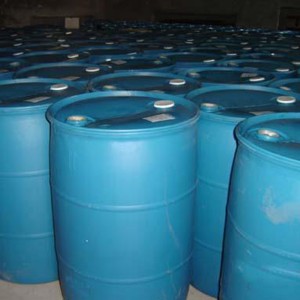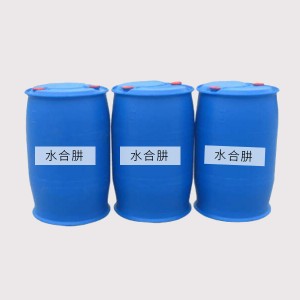Toluene
| Identification |
CHinese name:Toluene |
Dangerous goods number:32052 |
|||||||||
|
English name:Methylbenzene;Toluene |
UN number:1294 |
||||||||||
|
Molecular formula:C7H8 |
Molecular weight:92.14 |
CASnumber:108-88-3 |
|||||||||
|
Physical and chemical properties |
Appearance and traits |
A colorless, transparent liquid with a benzene-like aroma. |
|||||||||
|
Melting point (°C) |
-94.9 |
Relative density (water = 1) |
0.87 |
Relative density (air = 1) |
3.14 |
||||||
|
Boiling point (°C) |
110.6 |
Saturated vapor pressure (kPa) |
4.89/30℃ |
||||||||
|
Solubility |
It is insoluble in water and can be miscible in most organic solvents such as benzene, alcohol and ether. |
||||||||||
|
Toxicity and health hazards
|
Route of invasion |
Inhalation, ingestion, percutaneous absorption. |
|||||||||
|
toxicity |
LD50:1000mg/kg(Rat oral);12124mg/kg(Rabbit skin) LC50:5320ppm 8 hours(Mouse inhalation) |
||||||||||
|
Health hazard |
It has a stimulating effect on the skin and mucous membranes, and has a paralytic effect on the central nervous system; long-term effects can affect liver and kidney function; acute poisoning: patients have cough, tearing, conjunctival congestion, etc.; severe cases have hallucinations, embarrassment, unconsciousness, etc. Some have rickets-like episodes; chronic poisoning: patients with neurasthenic syndrome, female workers have abnormal menstruation, workers often have dry skin, wrinkles, dermatitis. |
||||||||||
|
First aid method |
Skin contact: Remove contaminated clothing and wash skin thoroughly with soap and water. Eye contact: Lift eyelids and rinse with running water or saline. Seek medical attention. Inhalation: Remove quickly from the scene to fresh air. Keep the airway open. If breathing is difficult, give oxygen. If breathing stops, perform artificial respiration immediately. Seek medical attention. Ingestion: Drink plenty of warm water, induce vomiting, and seek medical attention. |
||||||||||
|
Burning explosion hazard |
Flammability |
combustible |
Combustion decomposition product |
Carbon monoxide, carbon dioxide |
|||||||
|
|
Flash point (°C) |
4 |
Upper explosion limit (v%) |
7.0 |
|||||||
|
|
Ignition temperature (°C) |
535 |
Lower explosion limit (v%) |
1.2 |
|||||||
|
|
Construction fire risk classification |
甲 |
Stability, |
Stability, |
polymerization hazard, |
no polymerization |
|||||
|
|
Incompatibility |
Strong oxidants |
|||||||||
|
|
Dangerous characteristics |
Its vapor forms an explosive mixture with air, causing combustion and explosion in case of open flame and high heat. It can react with oxidants. Its vapor is heavier than air and can diffuse to a relatively distant place at a lower point, causing backfire in case of fire. In case of high heat, the internal pressure of the container increases, posing a risk of cracking and explosion. The flow rate is too fast, and it is easy to generate and accumulate static electricity. |
|||||||||
|
|
Storage and transportation conditions |
Storage and transportation conditions: Store in a cool, ventilated warehouse, away from fire and heat. Keep the container sealed; store separately from the oxidizer. The railway transportation time limit of this product is to be shipped by the steel enterprise’s own tanker, and it must be reported to the relevant department for approval before shipment. The tank (tank) used in transportation should have a grounding chain, and a hole partition can be arranged in the tank to reduce the static electricity generated by the shock. It is strictly forbidden to mix and transport with oxidants and food chemicals. The vehicle exhaust pipe carrying the item must be equipped with a fire-stop device, and it is forbidden to use the mechanical equipment and tools that are prone to sparks. When transporting by road, follow the prescribed route. Leakage treatment: Rapid evacuation of personnel from the contaminated area to the safe area, isolation and strict restrictions on access. Cut off the fire source. It is recommended that emergency personnel wear self-contained positive pressure breathing apparatus and wear fire protective clothing. Cut off the source of leakage as much as possible to prevent entry into restricted spaces such as sewers and flood drains. Small amount of leakage: absorbed with activated carbon or other inert materials. It can also be washed with an emulsion made of a non-flammable dispersant, and the washing liquid is diluted and placed in a waste water system. A large number of leaks: building dikes or digging pits; covering with foam to reduce steam disasters. Transfer to an exclusive collector with an explosion-proof pump, recycle or transport to a waste disposal site for disposal. If a large amount of toluene is sprinkled on the ground, the sand and mud should be immediately used to spread the liquid; if it is dumped in water, the dam should be immediately cut to cut off the flow of the polluted water, or spread and spread with the torn of the fence; If the sprinkle is in the soil, the contaminated soil should be collected immediately and quickly transferred to a safe place to allow it to evaporate. Ventilation at the scene of the accident, evaporation of residual liquid, and elimination of steam. |
|||||||||
|
|
And leak handling |
Spray water to keep the fire container cool. Move the container from the fire to the open space as much as possible. If the container in the fire has changed color or produces sound from a safety relief device, it must be evacuated immediately. Extinguishing media: foam, dry powder, carbon dioxide, sand. Fire extinguishing with water is not effective. |
|||||||||








